I know this is kinda a bit off the wall for here but I’m so chuffed with it and the project will also be enabling me to afford a trip to the salt later this year so figured I show it off to y’all 
A bit of background. 2005 was the 200th anniversary of the Battle of Trafalgar and there was a big auction of Nelson/Trafalgar memorabilia. Star lot was to be his pocket watch that had stayed in the family until then. It was bought by a foreign private buyer prior to the action taking place and is now on display at the National Maritime Museum in Greenwich.
The buyer was eager to have replicas made so he could possess a facsimile and I was fortunate to be recommended for the job. (I repair/restore antique watches) Soon after the auction it was arranged to view the original piece to inspect and measure it.


In fact I took it to pieces! Quite nerve-wracking on such a significant item.
Quite nerve-wracking on such a significant item.

As you can see its actually now a carriage clock of sorts rather than the pocket wach it started as. The engraving on the front describes how his niece who inherited it had this case made for it (in around 1835) to preserve it for any of her descendents who might enter the Navy.
I won’t go into why it has taken so long to get as far as completing one (lets just say there was a middleman involved in the deal who became difficult for all to contact) but here’s some in progress photos.
I machined lengths of the profiles needed so that a quantity of castings could be made and the various frames mitred and silver soldered together.
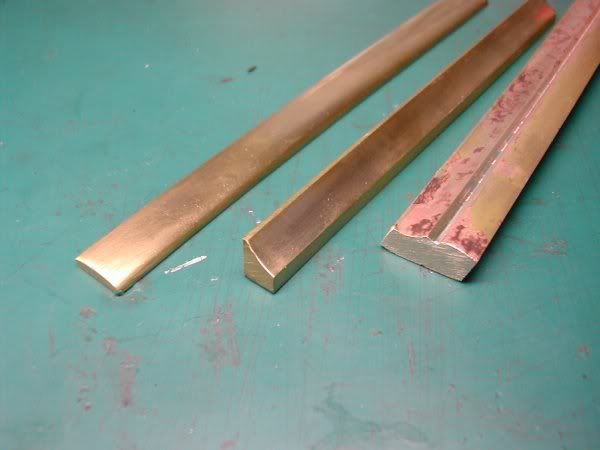
I had traced around the original handle and so transferred this shape to a piece of brass and set to with saw and files using photos as a reference.

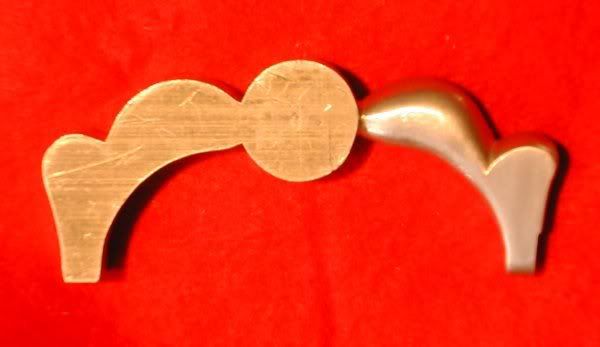

The front plate was made by boring the centre hole and then forming the appropriate bead shape by hand ie holding the cutting tool (graver) in my hand while the lathe spins – and watching my knuckles on the clamps!

The graver is supported on that aluminium bar and I had the lathe spinning backwards, cutting on the far side, to make it easier to see what I was doing.
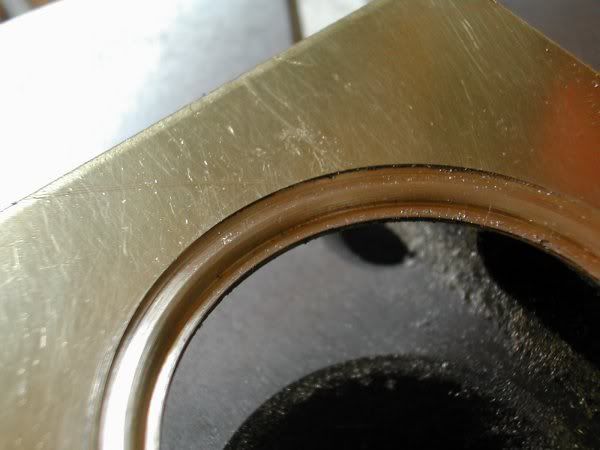
The engraving was done later by a master craftsman in that field.
I haven’t got a photo but the edges of what I called the “castle” plate were machined having worked out the appropriate pitch. I varied the distances a little as I went along to give it more of a hand made feel rather than machined precision. Here I’m chopping out the middle as there’s a glass window in the top of the case.

Here’s the top most plate marked for machining too. The centre was cut out to the first rectangle and then the edges of the hole filed to the correct semi fillet radius.

Here’s a couple of the window frames soldered together. Square brass was soldered on the insides to form a frame for the glass to sit in as per the original.

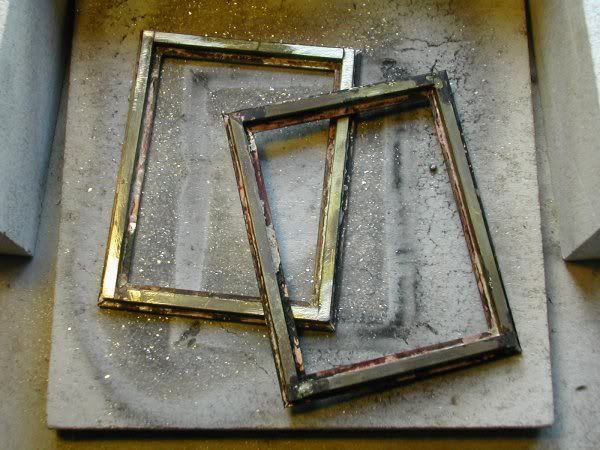
The original watch movement features a dust cover on the back and so that too was replicated to make it look right and hide the modern movements that would be fitted. (The original movement is a top grade very special 18th century movement and would be difficult and very expensive to replicate) The round section was turned from bar and the oval piece filed from flat. Soldering together and a bit of engraving resulted in a master for further castings.
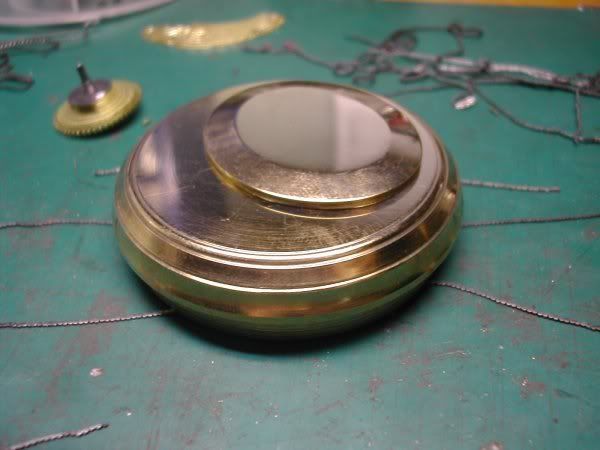
Here’s an early mock up. Lots of drilling and tapping to do.
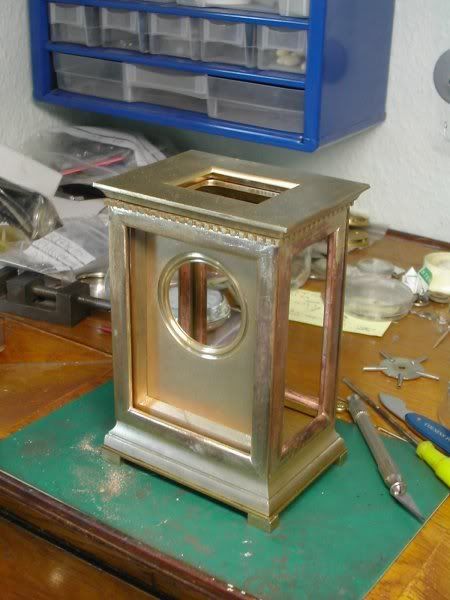
This was all done in the original allotted timeframes and then things went very quiet until this summer when I had direct contact from the customer and we hammered out a fresh agreement. I then had to sort out other incidentals, like hands, movements and dials, which were not originally in my remit.
I drew the hands using CAD and had several sets photo-etched as this was going to be somewhat less time consuming than making from scratch. Some re-profiling had to be done as photo-etching only produces flat components but they look the part when polished and then “blued” by careful heating.
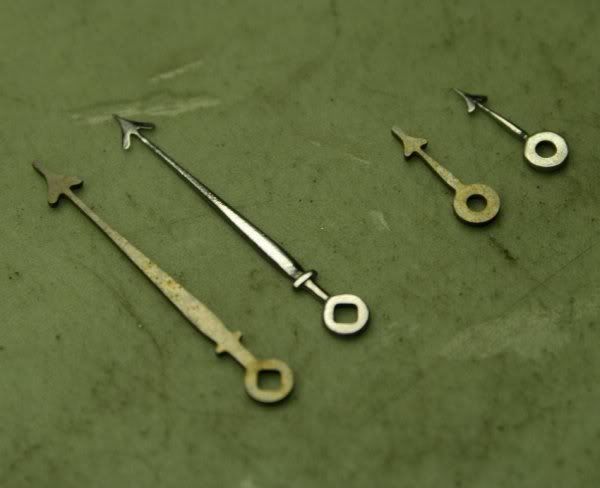
Dial artwork was done by R-Rer Wagoneer using photos of the original as a guide. We can be seen discussing this in the roof top photos from the summer's Ace cafe meet Movements are good grade quartz items, one for each hand. There was some work to make a housing to fit them in and to adapt the old style hands too.
Movements are good grade quartz items, one for each hand. There was some work to make a housing to fit them in and to adapt the old style hands too.

All the brass parts had to be fettled and finished ready for gilding and a small piece of 240+ year old copper from HMS Victory itself was soldered in to the base as well.
A little while ago all these parts came together into a finished item it was shipped to the customer and I got paid!
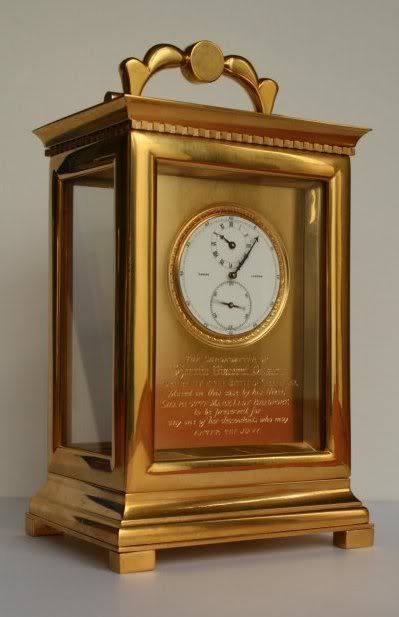



First instalment to the Bonneville fund. ;D

A bit of background. 2005 was the 200th anniversary of the Battle of Trafalgar and there was a big auction of Nelson/Trafalgar memorabilia. Star lot was to be his pocket watch that had stayed in the family until then. It was bought by a foreign private buyer prior to the action taking place and is now on display at the National Maritime Museum in Greenwich.
The buyer was eager to have replicas made so he could possess a facsimile and I was fortunate to be recommended for the job. (I repair/restore antique watches) Soon after the auction it was arranged to view the original piece to inspect and measure it.


In fact I took it to pieces!
 Quite nerve-wracking on such a significant item.
Quite nerve-wracking on such a significant item. 
As you can see its actually now a carriage clock of sorts rather than the pocket wach it started as. The engraving on the front describes how his niece who inherited it had this case made for it (in around 1835) to preserve it for any of her descendents who might enter the Navy.
I won’t go into why it has taken so long to get as far as completing one (lets just say there was a middleman involved in the deal who became difficult for all to contact) but here’s some in progress photos.
I machined lengths of the profiles needed so that a quantity of castings could be made and the various frames mitred and silver soldered together.

I had traced around the original handle and so transferred this shape to a piece of brass and set to with saw and files using photos as a reference.



The front plate was made by boring the centre hole and then forming the appropriate bead shape by hand ie holding the cutting tool (graver) in my hand while the lathe spins – and watching my knuckles on the clamps!

The graver is supported on that aluminium bar and I had the lathe spinning backwards, cutting on the far side, to make it easier to see what I was doing.

The engraving was done later by a master craftsman in that field.
I haven’t got a photo but the edges of what I called the “castle” plate were machined having worked out the appropriate pitch. I varied the distances a little as I went along to give it more of a hand made feel rather than machined precision. Here I’m chopping out the middle as there’s a glass window in the top of the case.

Here’s the top most plate marked for machining too. The centre was cut out to the first rectangle and then the edges of the hole filed to the correct semi fillet radius.

Here’s a couple of the window frames soldered together. Square brass was soldered on the insides to form a frame for the glass to sit in as per the original.


The original watch movement features a dust cover on the back and so that too was replicated to make it look right and hide the modern movements that would be fitted. (The original movement is a top grade very special 18th century movement and would be difficult and very expensive to replicate) The round section was turned from bar and the oval piece filed from flat. Soldering together and a bit of engraving resulted in a master for further castings.

Here’s an early mock up. Lots of drilling and tapping to do.

This was all done in the original allotted timeframes and then things went very quiet until this summer when I had direct contact from the customer and we hammered out a fresh agreement. I then had to sort out other incidentals, like hands, movements and dials, which were not originally in my remit.
I drew the hands using CAD and had several sets photo-etched as this was going to be somewhat less time consuming than making from scratch. Some re-profiling had to be done as photo-etching only produces flat components but they look the part when polished and then “blued” by careful heating.

Dial artwork was done by R-Rer Wagoneer using photos of the original as a guide. We can be seen discussing this in the roof top photos from the summer's Ace cafe meet
 Movements are good grade quartz items, one for each hand. There was some work to make a housing to fit them in and to adapt the old style hands too.
Movements are good grade quartz items, one for each hand. There was some work to make a housing to fit them in and to adapt the old style hands too.
All the brass parts had to be fettled and finished ready for gilding and a small piece of 240+ year old copper from HMS Victory itself was soldered in to the base as well.
A little while ago all these parts came together into a finished item it was shipped to the customer and I got paid!




First instalment to the Bonneville fund. ;D









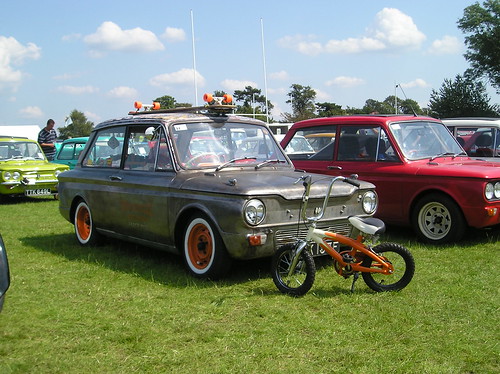






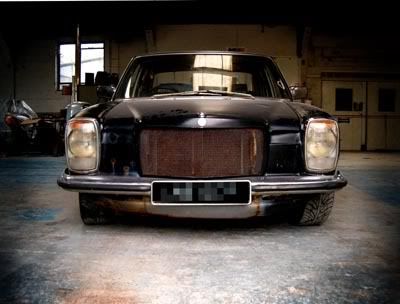
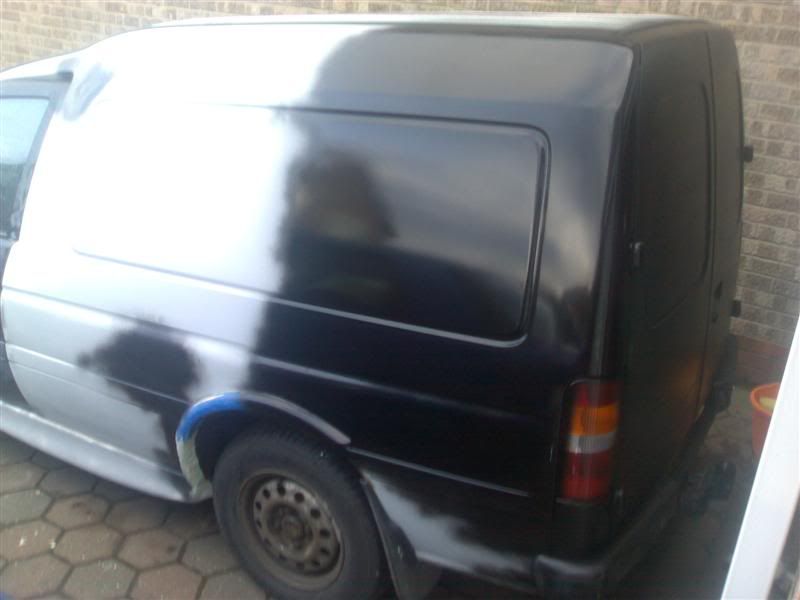


 , it looks like seth soldered together lengths of profile bar. don't know where the casting comes in
, it looks like seth soldered together lengths of profile bar. don't know where the casting comes in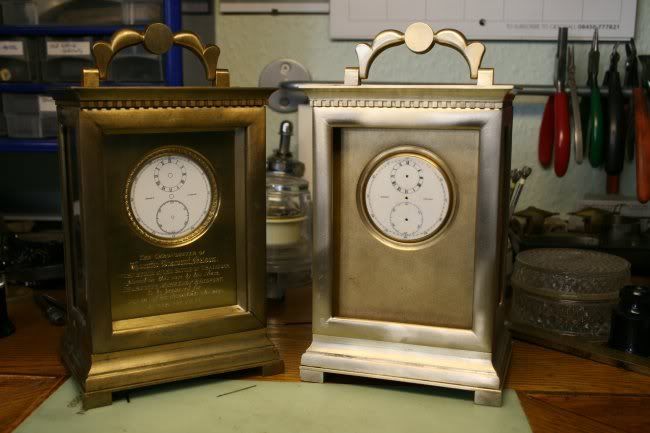
 . Going to be an interesting year.
. Going to be an interesting year.


